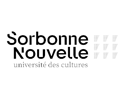Writing Revolutionary Mexico: A Cultural History
During the 1910s and 1920s, Mexico experienced one of the great revolutions of the past century. What discursive and ideological breaks constituted this widespread social upheaval as a “revolution”? What continuities remained largely unhindered from pre- to post-Revolutionary Mexico? How were national consolidation and social heterogeneity reconciled in the political and aesthetic discourses of the Mexican Revolution? How have creative thinkers historically represented the articulation and disarticulation of nation and state in Mexico? What is the critical function of those representational strategies? These are some of the questions that will govern our reading of a set of canonical cultural documents that foreshadow and reflect upon the various crises of hegemony and sovereignty that accompanied the Mexican Revolution.
It is possible to argue—in fact we will argue—that the most insightful documents of the Revolution are aesthetic in nature: essays, stories, novels, pictures. Even the political manifestos that serve as sign-posts of the Revolutionary era are, in their way, literary documents. The Revolution churned up major renegotiations of basic social categories, including race, social class, gender, land, and so on, and aesthetic artificacts both represented and provoked these transformations. None of this is a huge surprise, because nobody was writing a history (in the modern sense) of the Revolution as it unfolded. To feel the texture of the Revolution, to know it intimately, and to (de)construct its political force, we turn to stories: Azuela’s novels; Rivera’s paintings; de Fuentes’s films; Casasolas’s photographs. Even the post-Revolutionary revisionism plays out in these terms: Womack’s monumental Zapata and the Mexican Revolution (1970) is a historiographical work readable as a kind of novel, and Castellanos’s Oficio de tinieblas (1963) is a novel of deep historical insight. Thus as a way of getting our minds around the Revolution in its immediacy, it is to these kinds of artifacts that we will turn: historical and political essays, manifestos, novels, paintings, photographs, films. In doing so, we will sketch out three historical trajectories. First, we will examine the construction and critique of the normative “mestizo state” that coalesces around the pre-Revolutionary regime. Second, we will ask how the Revolution was written (that is, appropriated as discourse) in its immediate unfolding. Third, we will consider how the political, social and aesthetic problems forced into light by the Revolution are rethought, reworked and reproduced in its aftermath. The material through which we pursue these questions and themes will be drawn almost exclusively from primary documents, that is, texts written between 1850 and 1968.





